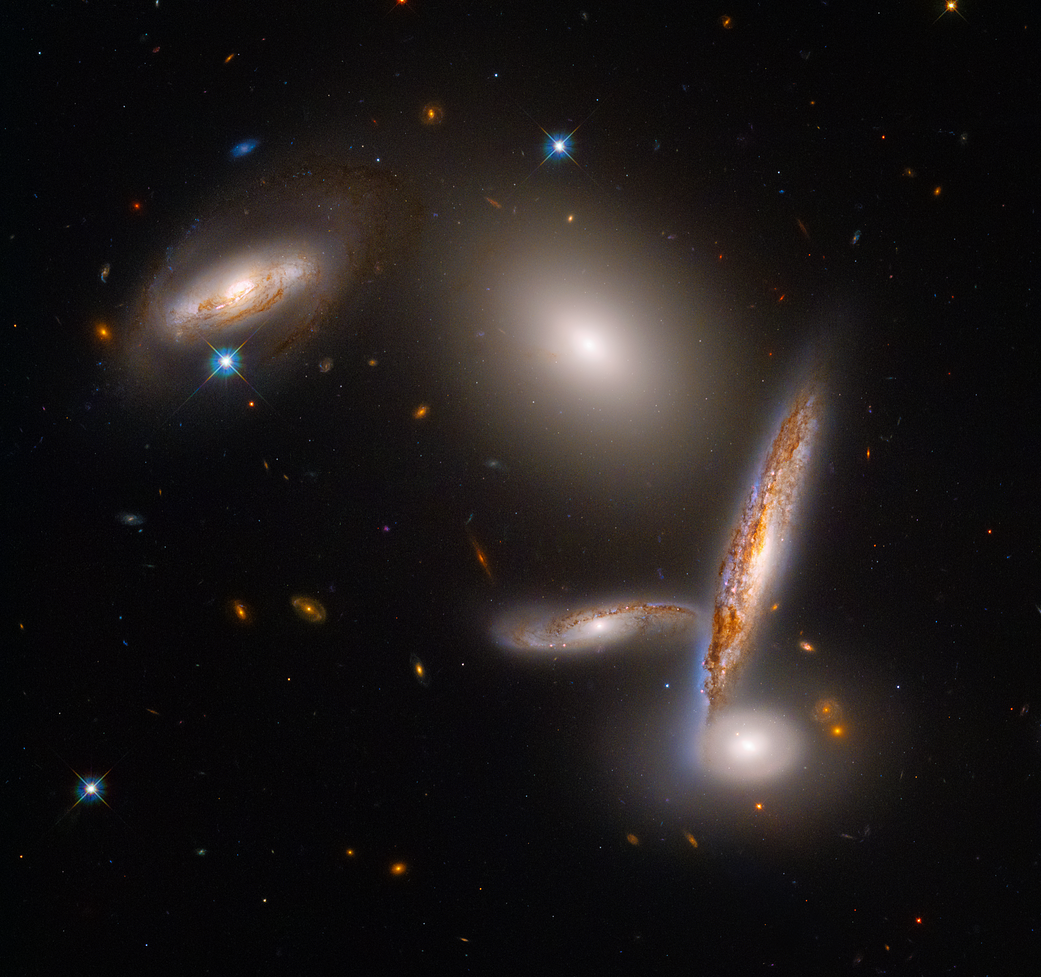Cosmos The Hickson Compact Group 40
Three spiral galaxies, an elliptical, and a lenticular feature in this Hubble Space Telescope image, all packed into a volume less than 200,000 light-years across, or twice the diameter of the Milky Way’s disk. Their light traveled 300 million light-years before it reached Hubble’s cameras.
At first glance, the five stunning galaxies of Hickson Compact Group 40 look disconnected, placed next to each other in space by chance superposition. But a closer look reveals connections between them, bridges made of gas and stars.
The galaxies make up one of the most crowded compact galaxy groups known, and it’s getting more crowded still. They’re falling inexorably toward each other — in about 1 billion years, there’ll be nothing to see here except for a giant elliptical fuzzball of stars.
Such compact groups might have been more common earlier in the universe’s timeline. Galactic interactions fueled the supermassive black holes that lurk in most galaxy centers and, indeed, most of the galaxies here show evidence of such a central black hole.
The image, taken late last year, was released recently in celebration of the Hubble Space Telescope’s 32nd year of operations. Hubble has far outlived its expected lifetime, having captured 1.5 million images of about 50,000 celestial objects along the way so far. HCG 40 is one more under its belt.
